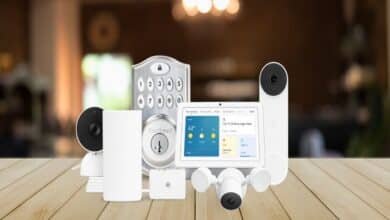Understanding E-Bike LCD Displays: Features and Functions Explained

E-bikes have revolutionized the way people commute and explore, blending convenience with cutting-edge technology. At the heart of this innovation lies the LCD display—a feature-packed interface that keeps riders informed and in control. From monitoring speed to tracking battery life, these displays enhance the riding experience by providing real-time data at a glance.
Understanding how E-bike LCD Display work and what they offer is key to making the most of your rides. Whether you’re a seasoned cyclist or new to e-bikes, knowing the features and functions of these displays can help you ride smarter and more efficiently.
The Role of an LCD Display in an E-Bike System
An LCD display acts as the central interface connecting the rider with the e-bike’s essential systems. It communicates real-time performance data, enhancing control and decision-making during rides. Metrics commonly shown include speed, distance traveled, battery life, and pedal assist levels.
Battery indicators provide insights into remaining power, helping riders plan trips more effectively. Speed and distance metrics, displayed prominently, allow riders to track their journey’s progress. Pedal assist mode indicators visually confirm the selected assistance level, ensuring optimal power usage.
Some advanced displays integrate settings adjustments, enabling riders to configure preferences directly through the screen. For instance, Ebikeling models include user-friendly interfaces for modifying pedal assist sensitivity or switching between riding modes. All these features streamline the overall cycling experience by placing control within easy reach.
Key Features to Look for in an E-Bike Display
Battery Level Indicator
E-bike LCD displays often include a battery level indicator to monitor remaining charge. This feature helps riders avoid unexpected power loss by providing precise battery status. Advanced screens may show charge percentages or estimated range based on current usage.
Speed Tracking
Displays typically show real-time and average speed during rides. Some advanced models offer maximum speed records for performance tracking. Accurate speed information enhances riding control, especially on varied terrains.
Pedal Assist Level
Most e-bike displays support adjustments for pedal assist levels. Riders can easily switch between low, medium, or high assist modes to match their desired effort and terrain conditions. Direct control through the display improves convenience.
Distance Metrics
Standard functionalities include trip distance and overall mileage tracking. Some systems also display estimated time to destination. These metrics assist with route planning and monitoring overall performance.
Backlight and Visibility
High-quality e-bike LCD displays often feature backlighting for easy reading in low-light conditions. Anti-glare or sunlight-readable screens improve visibility during daytime rides.
Error Codes and Diagnostics
Some modern displays can identify system issues using error codes. Riders can troubleshoot basic errors or seek professional help when necessary. This simplifies maintenance and ensures safer operation.
Customizable Settings
Advanced displays may allow users to configure parameters like speed limits, throttle sensitivity, or assist levels. Systems such as Ebikeling provide flexible options for user-specific adjustments, enhancing comfort and usability.
Connectivity Options
Certain models support Bluetooth or app integration for enhanced functionality. Connectivity enables data syncing, tracking, and even firmware updates through compatible devices. This feature modernizes the e-bike experience.
Durability and Weather Resistance
Rugged designs with waterproof or weather-resistant enclosures protect displays from damage. Durable screens ensure reliability, whether riding in rain, mud, or extreme temperatures.
Understanding Battery Level Indicators and Power Modes
Battery level indicators on an E-bike LCD display provide riders with real-time insights into the remaining charge. A graphic bar, percentage value, or both often represent this information to ensure easier monitoring. Many advanced displays calculate estimated range based on the current charge level and riding conditions. Accurate battery data allows riders to plan trips effectively, avoiding unexpected power depletion during commutes or long journeys.
Power modes, displayed alongside battery information, enable riders to control motor assistance levels. Common modes include eco, normal, and turbo, each offering varying levels of support. Eco mode consumes the least energy, ideal for longer distances. Turbo mode delivers maximum assistance, suitable for steep climbs or high-speed riding. Switching between modes directly on the display lets riders adapt to terrain changes and maintain efficient energy use.
Some displays, including models from brands like Ebikeling, integrate both battery indicators and power modes into intuitive interfaces. These systems simplify operation, enhance riding convenience, and ensure that riders can easily balance performance with battery conservation.
Speed Tracking, Trip Distance, and Odometer Functions
E-bike LCD displays offer essential speed tracking features, showing current, average, and maximum speeds. Riders use this data to monitor performance and maintain optimal riding pace. Advanced displays also enable toggling between metrics during rides for quick reference.
Trip distance functions measure the length of individual journeys. This feature aids in planning routes and evaluating riding efficiency. Data resets after each ride, making it ideal for tracking daily activities.
Odometer functions provide cumulative mileage data. Unlike trip distance, this metric tracks the total distance covered by the e-bike over its operational lifespan. Cumulative values help assess long-term usage patterns and plan maintenance schedules.
Some E-bike LCD displays, such as those by Ebikeling, combine all three metrics into a user-friendly interface. These integrated features enhance convenience, particularly for riders who prioritize performance analysis and ride tracking.
Customization Options and Smart Connectivity Features
E-bike LCD displays often include customization features to enhance usability and adapt to different rider preferences. These customization options allow adjustments to display brightness, language settings, and measurement units, such as switching between miles and kilometers. Advanced models enable configuring motor response or pedal assist sensitivity directly through the interface, personalizing the ride experience further.
Connectivity features offer seamless integration with smartphones and other devices. Bluetooth and app support allow riders to sync performance data, such as distance traveled and energy usage, to track long-term progress. Smart displays, including those from brands like Ebikeling, provide GPS navigation, ride analytics, and firmware updates via connected devices. Some even support pairing with heart rate monitors or fitness trackers, ensuring an optimized riding experience for fitness-focused users.
Certain displays support remote controls mounted on handlebars, ensuring customization and connectivity adjustments can be made without compromising safety. By integrating such smart features, e-bike LCD displays act as hubs for both functionality and connectivity.
Choosing the Right LCD Display for Your Riding Preferences
Understanding the features and functions of e-bike LCD displays empowers riders to make informed decisions that align with their needs. Whether it’s monitoring battery life, tracking speed, or customizing ride settings, the right display can significantly enhance the overall experience.
By evaluating key features, durability, and connectivity options, riders can choose a display that complements their riding style and goals. A well-chosen LCD display ensures greater control, efficiency, and enjoyment, making every ride more seamless and tailored to individual preferences.




